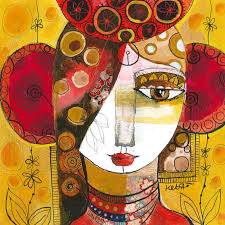VES World Languages Department
-
 "The sum of human wisdom is not contained within any one language" Ezra PoundVILLAGE ELEMENTARY SCHOOLSUPERVISOR OF WORLD LANGUAGES AND ESL, ALMA REYES(609) 466 7602 ext. 632 Email : areyes@mtsd.usOUR MISSION is ... to foster life-long learners who have a positive impact on the world by exploring interculturality through discourse about different languages, cultures and real life experiences. Our world languages family promotes acceptance, compassion, respect, equity and social justice. We envision a world of respectful and globally-minded citizens who think critically, embrace diversity and strive to build just societies that are free of fear and hatred of the unknown other.ESTABLISHED GOALS: STATE AND NATIONAL STANDARDSWHAT IS THE ELEMENTARY FLEX PROGRAM?CURRICULUMThe curriculum uses the Understanding by Design (UbD) approach and is organized in thematic units to provide meaningful context for academic and cultural content, address national and state standards and assure that students are 21st century college-, careers- and world-ready. We offer Spanish to all third and fourth grade students at Village Elementary School. Forty-minute classes meet regularly twice in a cycle of 6 school days.
"The sum of human wisdom is not contained within any one language" Ezra PoundVILLAGE ELEMENTARY SCHOOLSUPERVISOR OF WORLD LANGUAGES AND ESL, ALMA REYES(609) 466 7602 ext. 632 Email : areyes@mtsd.usOUR MISSION is ... to foster life-long learners who have a positive impact on the world by exploring interculturality through discourse about different languages, cultures and real life experiences. Our world languages family promotes acceptance, compassion, respect, equity and social justice. We envision a world of respectful and globally-minded citizens who think critically, embrace diversity and strive to build just societies that are free of fear and hatred of the unknown other.ESTABLISHED GOALS: STATE AND NATIONAL STANDARDSWHAT IS THE ELEMENTARY FLEX PROGRAM?CURRICULUMThe curriculum uses the Understanding by Design (UbD) approach and is organized in thematic units to provide meaningful context for academic and cultural content, address national and state standards and assure that students are 21st century college-, careers- and world-ready. We offer Spanish to all third and fourth grade students at Village Elementary School. Forty-minute classes meet regularly twice in a cycle of 6 school days.
Spanish Grade 3: Life in Central America . This year-long course explores the rich cultural, geographic and historical features of Central America and the Caribbean. The Spanish language is contextualized through hands-on projects and activities, including guest speakers to help students not only acquire language skills, but also understand the culture of this diverse region. Students compare and contrast their world to the Mayan Civilization and to that of other indigenous and modern peoples. Areas of focus include food, clothing, animals, numbers, architecture, stories and other cultural products and practices.

Spanish Grade 4: Life in South America. This year-long course explores the rich cultural, geographic and historical features of South America. The Spanish language is contextualized through hands-on projects and activities, including guest speakers to help students not only acquire language skills, but also understand the culture of this diverse region. Students compare and contrast their world to the Incan Civilization and to that of other indigenous and modern peoples. Areas of focus include the market, currency, activities, the Columbian exchange (after Christopher Columbus), architecture, stories and other cultural products and practices.
FACULTYNAME SUBJECT EMAIL Shania Bryant English for Multilingual Learners sbryant@mtsd.us Jenny Egas Spanish jegas@mtsd.us Lorena Santamaria Spanish lsantamaria@mtsd.us

